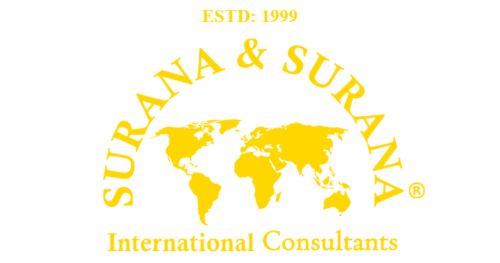Introduction
Corporate value is a critical measure of a company’s overall worth, encompassing not only its financial performance but also its market reputation, customer satisfaction, innovation potential, and governance practices. For businesses aiming to thrive in a competitive landscape, maximizing corporate value is not just desirable—it’s essential. A higher corporate value can lead to increased investor confidence, greater market share, and long-term sustainability. In this blog, we will explore key areas that contribute to maximizing corporate value, including financial performance, customer satisfaction, innovation and growth, corporate governance, and risk management. By focusing on these areas, companies can enhance their value and secure a prosperous future.
Key Areas for Maximizing Corporate Value
Financial Performance
The Importance of Strong Financial Performance
Strong financial performance is the cornerstone of corporate value. It reflects a company’s ability to generate revenue, manage costs, and deliver profits, all of which are critical for sustaining operations and driving growth. Financial performance not only impacts the company’s bottom line but also influences investor perceptions, stock prices, and the company’s ability to attract and retain capital.
Key Financial Metrics
Understanding and optimizing key financial metrics is essential for maximizing corporate value. Some of the most important metrics include:
- Revenue Growth: Indicates the company’s ability to increase sales over time, reflecting market demand and business expansion.
- Profitability: Measured by metrics such as net profit margin and operating margin, profitability shows how efficiently a company converts revenue into profit.
- Return on Investment (ROI): ROI assesses the efficiency of investments made by the company, indicating how well the company is using its resources to generate returns.
Tips for Improving Financial Performance
- Cost Management: Regularly review and optimize operational costs to ensure the company is running efficiently without unnecessary expenditures.
- Revenue Diversification: Explore new revenue streams or expand into new markets to reduce dependence on a single source of income.
- Investment in High-ROI Projects: Prioritize investments that offer the highest return on investment, focusing on projects that align with the company’s strategic goals.
Customer Satisfaction
The Link Between Customer Satisfaction and Corporate Value
Customer satisfaction is a key driver of corporate value. Satisfied customers are more likely to become repeat buyers, recommend the company to others, and contribute to positive word-of-mouth marketing. High levels of customer satisfaction can lead to increased customer loyalty, which in turn boosts revenue and profitability—key components of corporate value. Moreover, a strong reputation for customer satisfaction can enhance a company’s brand, attracting new customers and creating a competitive advantage in the market.
The Importance of Customer Loyalty and Retention
Customer loyalty and retention are crucial for maximizing corporate value. Acquiring new customers is often more costly than retaining existing ones, making customer retention a more cost-effective strategy for sustaining growth. Loyal customers tend to make more frequent purchases, spend more per transaction, and are less sensitive to price changes. By focusing on customer retention, companies can build a stable revenue base and reduce the volatility associated with customer turnover.
Strategies for Enhancing Customer Satisfaction
- Deliver Exceptional Customer Service: Train your customer service teams to be responsive, empathetic, and solution-oriented. Resolving issues quickly and effectively can turn a negative experience into a positive one and strengthen customer loyalty.
- Gather and Act on Customer Feedback: Regularly collect feedback through surveys, reviews, and direct communication. Use this feedback to make informed improvements to products, services, and customer interactions.
- Personalize the Customer Experience: Leverage data analytics to understand customer preferences and tailor your offerings accordingly. Personalization can create a more engaging and satisfying customer experience, leading to higher retention rates.
- Build a Strong Customer Relationship Management (CRM) System: Implementing a robust CRM system helps track customer interactions, preferences, and purchase history, allowing for more targeted and effective marketing and customer service efforts.
Innovation and Growth
The Role of Innovation in Driving Corporate Value
Innovation is a powerful engine for driving corporate value. In today’s fast-paced and competitive business environment, companies that consistently innovate are better positioned to meet changing market demands, stay ahead of competitors, and capture new opportunities. Innovation can lead to the development of new products, services, and business models, all of which contribute to revenue growth and market expansion. By fostering a culture of innovation, companies can enhance their long-term value and ensure sustained relevance in the marketplace.
The Importance of Research and Development
Investing in research and development (R&D) is critical for innovation. R&D enables companies to explore new ideas, technologies, and processes that can lead to groundbreaking products and services. A strong commitment to R&D not only drives innovation but also signals to investors and customers that the company is focused on future growth. Companies that invest in R&D often enjoy a competitive advantage, as they are better equipped to introduce new offerings that meet evolving customer needs and set industry trends.
Tips for Fostering a Culture of Innovation
- Encourage Creative Thinking: Create an environment where employees feel empowered to share ideas and think creatively. Encourage cross-functional collaboration to combine different perspectives and generate innovative solutions.
- Allocate Resources for Experimentation: Dedicate a portion of your budget to experimentation and pilot projects. Allow teams to test new ideas in a low-risk setting, and be open to learning from failures as much as successes.
- Recognize and Reward Innovation: Establish recognition programs that celebrate innovative thinking and successful projects. Incentivizing innovation can motivate employees to take initiative and contribute to the company’s growth.
- Stay Connected to Market Trends: Regularly monitor market trends, emerging technologies, and customer preferences. Staying informed allows your company to anticipate changes and adapt quickly, ensuring that your innovations are aligned with market needs.
- Invest in Talent Development: Provide ongoing training and professional development opportunities to keep your team at the forefront of industry knowledge and skills. A well-informed and skilled workforce is more likely to drive successful innovation efforts.
Corporate Governance
The Importance of Good Corporate Governance
Good corporate governance is a cornerstone of maximizing corporate value. It involves the systems, processes, and principles that guide how a company is managed and controlled. Strong corporate governance ensures that a company operates with transparency, accountability, and integrity, which are critical for building trust with investors, customers, and other stakeholders. Companies with robust governance practices are better equipped to make sound decisions, manage risks, and maintain long-term sustainability, all of which contribute to enhanced corporate value.
The Role of the Board of Directors and Management Team
The board of directors and management team play pivotal roles in establishing and maintaining good corporate governance. The board is responsible for providing strategic oversight, ensuring that the company’s leadership acts in the best interests of shareholders, and holding management accountable for their decisions. A well-composed board should include a mix of independent directors with diverse skills and experience to provide balanced and objective guidance.
The management team, on the other hand, is responsible for executing the company’s strategy, managing day-to-day operations, and upholding the governance standards set by the board. Effective collaboration between the board and management is essential for aligning the company’s goals with its governance practices and for fostering a culture of ethical leadership.
Best Practices for Corporate Governance
- Establish a Strong, Independent Board: Ensure that your board of directors includes a sufficient number of independent members who can provide unbiased oversight. The board should also possess a diverse range of skills, including expertise in finance, law, industry-specific knowledge, and corporate governance.
- Implement Clear Governance Policies: Develop and enforce clear policies and procedures related to ethical conduct, conflict of interest, and decision-making processes. These policies should be regularly reviewed and updated to reflect best practices and regulatory requirements.
- Foster Transparency and Accountability: Regularly communicate with shareholders and other stakeholders about the company’s performance, strategy, and governance practices. Transparency builds trust and ensures that stakeholders are well-informed about the company’s direction and decisions.
- Regularly Assess Governance Effectiveness: Conduct regular evaluations of the board’s performance, as well as the effectiveness of the company’s governance framework. Continuous improvement in governance practices can help the company adapt to changing environments and stakeholder expectations.
- Promote Ethical Leadership: Encourage a culture where ethical behavior is valued and expected at all levels of the organization. Management should lead by example, demonstrating a commitment to ethical practices in all business dealings.
Risk Management
The Importance of Effective Risk Management
Effective risk management is essential for safeguarding corporate value and ensuring the long-term success of a company. In today’s dynamic business environment, companies face a wide array of risks, including financial, operational, strategic, regulatory, and reputational risks. Managing these risks proactively can help a company avoid potential pitfalls, minimize losses, and capitalize on opportunities. By implementing a robust risk management framework, companies can protect their assets, maintain stakeholder confidence, and enhance their overall value.
Common Risks Faced by Businesses
Businesses encounter various types of risks, each of which requires a tailored approach to management:
- Financial Risks: These include risks related to market volatility, currency fluctuations, credit risk, and liquidity issues. Financial risks can impact a company’s profitability and stability, making it crucial to have strategies in place to manage them.
- Operational Risks: These involve risks arising from internal processes, systems, and people. Examples include supply chain disruptions, technology failures, and human error. Operational risks can affect the efficiency and effectiveness of a company’s operations.
- Strategic Risks: Strategic risks are associated with the decisions a company makes regarding its direction and long-term goals. Poor strategic decisions, such as entering an unprofitable market or failing to innovate, can lead to significant setbacks.
- Regulatory Risks: These risks stem from changes in laws, regulations, and compliance requirements. Regulatory risks can lead to legal penalties, increased costs, and reputational damage if not properly managed.
- Reputational Risks: Reputational risks arise from negative public perception, often resulting from scandals, poor customer service, or unethical practices. These risks can have long-lasting effects on a company’s brand and market position.
Strategies for Mitigating Risks
- Implement a Comprehensive Risk Management Framework: Develop a structured approach to identifying, assessing, and managing risks across the organization. This framework should include policies, procedures, and tools for monitoring and controlling risks.
- Conduct Regular Risk Assessments: Periodically review and assess the risks facing your company. Regular risk assessments help identify new risks, evaluate the effectiveness of existing controls, and make necessary adjustments to the risk management strategy.
- Diversify Revenue Streams and Operations: Diversification can reduce the impact of specific risks by spreading exposure across different markets, products, and customer segments. This strategy can help mitigate financial and operational risks.
- Maintain Strong Internal Controls: Implement robust internal controls to prevent and detect operational risks, such as fraud or process failures. Strong controls help ensure that the company’s operations run smoothly and efficiently.
- Stay Informed on Regulatory Changes: Keep abreast of changes in laws and regulations that may affect your business. Proactively adapting to new regulatory requirements can help avoid legal issues and maintain compliance.
- Develop a Crisis Management Plan: Prepare for potential crises by developing a crisis management plan that outlines the steps to take in the event of a major risk event. This plan should include communication strategies, response protocols, and recovery plans.
Conclusion
Maximizing corporate value is a multifaceted endeavor that requires a holistic approach, encompassing financial performance, customer satisfaction, innovation, corporate governance, and risk management. Each of these areas plays a critical role in not only sustaining but also enhancing the overall worth of a company. By focusing on strong financial metrics, fostering customer loyalty, driving innovation, ensuring robust governance practices, and proactively managing risks, companies can build a solid foundation for long-term success and market leadership.
In today’s competitive business landscape, it’s not enough to excel in just one area—companies must consistently strive for excellence across all facets of their operations. This comprehensive approach not only boosts corporate value but also positions the company as a resilient and forward-thinking leader in its industry.
As you work towards maximizing your company’s value, remember that the key lies in balance and strategic foresight. By aligning your efforts across these critical areas, you can create a sustainable path to growth, attract top talent, secure investor confidence, and ultimately, achieve your long-term business goals.
Whether you’re a startup aiming to scale or an established company looking to strengthen your market position, the principles discussed in this blog can serve as a valuable guide to enhancing your corporate value and ensuring lasting success in the ever-evolving business world.




